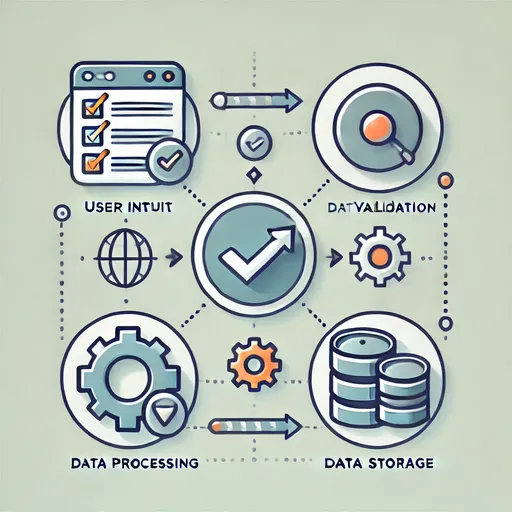The Django form system is a tool for securely receiving and validating data. In this article, we will explore what Django Forms are, why they are necessary, and how to use them basics. We will explain in detail so that even beginners can understand.

Definition of Django Forms
Django Forms are a tool for receiving, processing, and validating data from users. This helps to prevent incorrect user input and security issues.
Features Provided by Django Forms
- HTML Form Generation: Dynamically generates forms on the server.
- Validation: Automatically checks the format of input data.
- Data Processing: Converts received data into Python objects.
Why are Forms Needed?
1. Limitations of HTML Forms
HTML forms alone cannot process user input data. The server must manually handle and validate the data, which can be cumbersome and prone to security vulnerabilities.
2. Advantages of Django Forms
- Automatic Validation: Automatically handles required inputs and format checks (e.g., email format).
- Enhanced Security: Provides built-in CSRF protection.
- Improved Productivity: Simplifies the implementation of complex form logic.
Main Components of Django Forms
1. forms.Form
forms.Form offers a form class in Django that independently validates and processes data.
Example: Simple Form
from django import forms
class SimpleForm(forms.Form):
name = forms.CharField(max_length=100)
email = forms.EmailField()
name: A string field with a maximum length of 100 characters.email: A field that validates email formats.
2. forms.ModelForm
forms.ModelForm simplifies the interaction with the database by connecting forms to Django models. It allows for the automatic creation or updating of model instances.
Example: Model-Based Form
from django import forms
from .models import Post
class PostForm(forms.ModelForm):
class Meta:
model = Post
fields = ['title', 'content']
model: The Django model to link to.fields: Fields of the model to include in the form.
3. Fields and Widgets
- Fields: Classes for validating and storing input data.
- Widgets: Used to render HTML form elements.
Main Fields and Widgets
| Field | Description | Default Widget |
|---|---|---|
CharField |
String input field | TextInput |
EmailField |
Email format input field | EmailInput |
IntegerField |
Integer input field | NumberInput |
ChoiceField |
Select input field | Select |
Example of Basic Form Creation
Defining the Form Class
from django import forms
class ContactForm(forms.Form):
name = forms.CharField(max_length=50)
email = forms.EmailField()
message = forms.CharField(widget=forms.Textarea)
Processing the Form in the View
from django.shortcuts import render
from .forms import ContactForm
def contact_view(request):
if request.method == 'POST':
form = ContactForm(request.POST)
if form.is_valid():
# Processing logic (e.g., sending an email)
name = form.cleaned_data['name']
email = form.cleaned_data['email']
message = form.cleaned_data['message']
print(f"Name: {name}, Email: {email}, Message: {message}")
else:
form = ContactForm()
return render(request, 'contact.html', {'form': form})
Rendering the Form in the Template
<form method="post">
{% csrf_token %}
{{ form.as_p }}
<button type="submit">Submit</button>
</form>
{{ form.as_p }}: Renders the form fields wrapped in<p>tags.
Summary of User Input Processing Flow
- Form Rendering: Passes the form object created in the view to the template.
- User Input Submission: Sends data via POST request through the HTML form.
- Validation: Validates data by calling
form.is_valid()in the view. - Data Processing: The form automatically returns validated data as
cleaned_datausing the built-inclean()method. - Additional Validation if Necessary: You can write
clean_()methods to perform additional validation on specific fields. - Data Saving: Calls
form.save()to save data (for ModelForm).
Ending Part 1
Django Forms are an essential tool for securely receiving and processing data. In this article, we covered the basic principles and usage. In the next part, we will look deeper into forms.Form and forms.ModelForm differences and explore real use cases.

There are no comments.